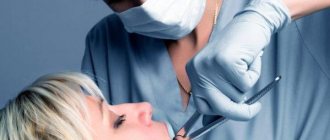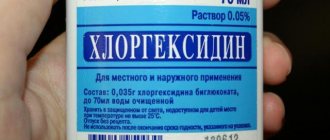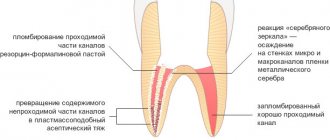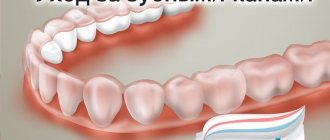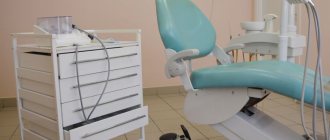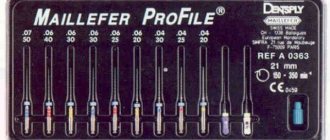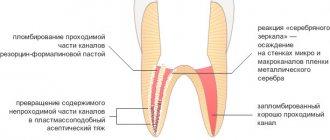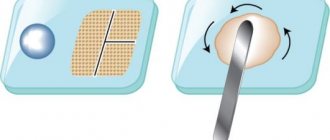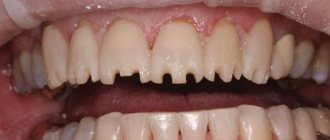Chlorhexidine poisoning is not a very common occurrence due to the fact that most of it is used in small doses and in low concentrations. Chlorhexidine is an antiseptic substance widely used in dental, gynecological, ENT, and other practices. However, this is a drug, which means it has certain contraindications and side effects, and must be used strictly according to the instructions.
The medicine has different release forms
In this article we will talk about the properties of chlorhexidine, and also get acquainted with the methods of its use and the symptoms of poisoning with this substance. In addition, we will learn how to help with chlorhexidine poisoning.
What is Chlorhexidine and its action
Chlorhexidine is a very popular drug known to many people, since its scope of application is quite wide. Its main purpose is to remove pathogenic microorganisms of various categories.
Most often, Chlorhexidine is used to treat all kinds of wounds and abrasions, as well as to disinfect the doctor’s hands before examination or surgical procedures.
Can Chlorhexidine be used to treat open wounds? If previously brilliant green and iodine were most often used to treat abrasions, today Chlorhexidine is in first place among many pharmaceutical products, gradually replacing even hydrogen peroxide. The drug has no contraindications, does not cause adverse reactions, and is used not only for the treatment of injuries, but also in the treatment of certain diseases.
Chlorhexidine for wound treatment perfectly destroys microorganisms of various groups , including gram-positive and gram-negative bacteria, Trichomonas vaginalis, protozoa, as well as most viruses, including the herpes virus. The drug is powerless only against Koch's bacillus, which is the causative agent of tuberculosis.
At the same time, an important advantage of the product is the absence of a resistant reaction to it in microorganisms, that is, the bacteria being destroyed do not get used to it, do not mutate, do not adapt, but simply die. Therefore, the effectiveness of the drug remains throughout the entire treatment, regardless of how often treatments are carried out.
How to treat
The first thing an allergy sufferer should do is to refuse treatment with chlorhexidine. It must be replaced with an analogue or a drug with a similar effect.
Treatment for mild symptoms
Antihistamines are prescribed, as well as various ointments that eliminate the manifestations of an allergic reaction on the skin.
- Zyrtec;
- Suprastin;
- Loratadine;
- Claritin;
- Cetirizine and others.
- Hydrocortisone;
- Advantan;
- Flucinar and others.
IMPORTANT! Although hormonal ointments are more effective than non-hormonal ointments, they should nevertheless be used with caution. The course of treatment should not exceed more than one week.
Folk remedies
Various decoctions of herbs such as chamomile, mint, yarrow, sage and others will help cope with allergies, namely eliminate manifestations on the skin. It is enough to wash the affected areas of the body with such decoctions or use lotions from them.
You can prepare an ointment yourself that effectively relieves itching and irritation. To do this, you need to take celery root, as well as butter.
Oatmeal, which is steamed in milk, moisturizes the skin well.
How to relieve moderate symptoms?
An allergy sufferer who has a moderate severity of allergy should take an antihistamine. Both first generation, second and third generation antihistamines are suitable for this. Treatment should be symptomatic.
Be sure to consult a doctor as soon as possible for advice.
Help with complications
In very rare cases, allergies can be severe. Then the patient may experience anaphylactic shock, which is accompanied by a sharp decrease in pressure, loss of consciousness, and increased heart rate. An allergy sufferer with such signs needs urgent medical attention.
Indications for use
Indications for use of the drug include:
- Carrying out disinfection of wounds of various types, including those on mucous membranes.
- Use as part of complex therapy in the treatment of various fungal infections.
- Preventive treatments to prevent STDs.
- Treatment of oral diseases such as gingivitis, periodontitis and stomatitis.
When treating wounds, cuts, abrasions and other injuries, the solution is applied directly to the surface of the skin and injury without the use of gauze pads or cotton swabs (discs). To carry out the treatment, simply pour the composition onto the damage after preliminary cleaning.
It is important to remember that when treating skin and soft tissue injuries, bleeding should be stopped before filling the wound with Chlorhexidine, since the drug does not have a hemostatic effect.
To disinfect injured areas, a solution of concentration from 0.05 to 0.1% is used. The same solution (in the same concentration) can be used to carefully treat the surface of burns, including chemical and thermal ones. In this case, the solution will work not only as an antiseptic, but also as a means of cooling the surface, as well as washing away chemicals from the skin and the site of damage that led to the burn.
Chlorhexidine is often used for dressings instead of hydrogen peroxide. Wounds, including purulent ones, are washed with the solution, the hands of medical personnel are treated, and bandages that have dried to the wounds are watered for painless and careful removal.
Treatment of intoxication
The toxicity of Chlorhexidine is high only at high concentrations. In this case, the victim is hospitalized for further treatment in a hospital. There is no specific antidote that can neutralize the active ingredient, so therapy is aimed at eliminating the symptoms of poisoning.
The following clinical and pharmacological groups are used:
- enterosorbents;
- gastroprotectors;
- hepatoprotectors;
- regeneration stimulants.
For fluid loss with vomiting and diarrhea, treatment regimens include Hydrovit or Regidron. Their use allows you to replenish the reserves of essential macroelements. Severe poisoning requires intravenous administration of solutions of sodium chloride, Ringer, and glucose.
Wound treatment with Chlorhexidine
The main purpose of the drug is precisely the antiseptic treatment of various surfaces, not only healthy skin, but also wounds of almost any origin.
The product belongs to the group of special germicidal antibiotics, and therefore Chlorhexidine is capable of not only stopping the growth of harmful microorganisms, preventing their reproduction, but also completely destroying pathogenic elements.
If we compare the product with other drugs of the antiseptic group, we can note that Chlorhexidine has no color or any odor, which means that this antiseptic is not toxic, does not leave marks on the skin, and does not cause pain to the patient when treating wounds, which is also significant advantages.
The drug does not have a negative effect on the healing process and does not lead to the formation of pronounced scars.
Chlorhexidine is completely safe , it does not cause allergic reactions or irritation of damaged tissues, and therefore is very often used to treat fresh skin lesions and disinfect them, along with regular hydrogen peroxide.
To treat fresh scratches, abrasions, various wounds, including postoperative wounds, in order to prevent the development of infection, a solution of the drug is used in a concentration of 0.05 - 0.1%. A solution of the same concentration can also be used to treat burns, as well as wounds in the oral cavity after tooth extraction.
A one-time treatment of the wound immediately after receiving it does not exclude the possibility of secondary infection, therefore, after washing, a sterile bandage should be applied, and if it is small, it can be sealed with a bactericidal plaster.
To treat wounds, it is recommended to simply pour a small amount of the drug onto the surface, wait a little, and then carefully blot the residue with a sterile napkin. Before carrying out such treatment, it is recommended to thoroughly wash the wound and the skin around it with water and laundry soap to remove any existing contaminants.
The drug in a concentration of 0.1 - 0.2% is often used for disinfection when performing various medical procedures , for example, when removing splinters, opening calluses and small abscesses, boils, when striking wounds that have dried to the surface of bandages, bandages, and plaster. A solution of this concentration is also used to treat the hands of medical personnel.
Notes[ | ]
- Calibr ReFrame Drug repurposing library
- State register of medicines (unspecified)
. grls.rosminzdrav.ru. Retrieved April 21, 2022. - Zverkov A.V., Zuzova A.P.
Chlorhexidine: past, present and future of one of the main antiseptics // Clinical microbiology and antimicrobial chemotherapy. - 2013. - No. 4. - First study to link antibiotic resistance with exposure to the disinfectant chlorhexidine (undefined)
. EurekAlert!. Retrieved November 1, 2022. - WHO Model List of Essential Medicines 18th list (April 2013) (unspecified)
. - Ionov O.V., Nikitina I.V., Kirtbaya A.R., Balashova E.N., Lenyushkina A.A., Lyubasovskaya L.A., Rodchenko Yu.V., Priputnevich T.V., Zubkov V. .V., Degtyarev D.N.
“Chlorhexidine bigluconate solution and ethyl alcohol: which antiseptic is more effective in newborns?” (Russian) // Neonatology: News. Opinions. Training: Scientific journal. — Russia: All-Russian public organization for promoting the development of neonatology “Russian Society of Neonatologists,” 2022. — February 7 (No. 1). — P. 79-85. — ISSN 2658-7424. Archived from the original on February 27, 2020. - Alex Chin, Julie Chu, Mahen Perera, Kenrie Hui, Hui-Ling Yen, Michael Chan, Malik Peiris, Leo Poon.
“Stability of SARS-CoV-2 in different environmental conditions” (English) // The Lancet Microbe : Medical journal[en]. - Hong Kong University: Elsevier, 2022. - April 2 (vol. 20, iss. 4). — ISSN 2666-5247. - doi:10.1016/S2666-5247(20)30003-3. Archived from the original on April 17, 2022. - Lai, P; Coulson, C; Pothier, D. D; Rutka, J (2011). “Chlorhexidine ototoxicity in ear surgery, part 1: Review of the literature.” Journal of Otolaryngology - Head & Neck Surgery
.
40
(6): 437–40. PMID 22420428. - ↑ 12
Chhabra, R. S., Huff, J. E., Haseman, J. K., Elwell, M. R., & Peters, A. C. (1991). Carcinogenicity of p-chloroaniline in rats and mice. Food and chemical toxicology, 29(2), 119–124. - Zverkov A.V., Zuzova A.P.
“Chlorhexidine: past, present and future of one of the main antiseptics” (Russian) // Clinical microbiology and antimicrobial chemotherapy: Scientific and practical journal. - Smolensk: Interregional Association of Public Associations "Interregional Association for Clinical Microbiology and Antimicrobial Chemotherapy", 2013. - T. 15, No. 4. - P. 281. - ISSN 2686-9586. Archived from the original on April 18, 2022. - S. Malhotra, A. Dharmadasa, S. M. Yentis.
“One vs two applications of chlorhexidine⁄ethanol for disinfecting the skin: implications for regional anesthesia” (English) // Anaesthesia[en] : Medical journal[en]. - Association of Anesthetists of Great Britain and Ireland[en]: Wiley-Blackwell[en], 2011. - May 24 (vol. 66, iss. 7). — P. 574–578. — ISSN 1365-2044. - doi:10.1111/j.1365-2044.2011.06706.x. Archived from the original on April 20, 2022. - Shyh-Ren Chiang, Fang Jung, Hung-Jen Tang, Chung-Hua Chen, Chi-Chung Chen, Hsiu-Yin Chou, Yin-Ching Chuang.
“Desiccation and ethanol resistances of multidrug resistant Acinetobacter baumannii embedded in biofilm: The favorable antiseptic efficacy of combination chlorhexidine gluconate and ethanol” (English) // Journal of Microbiology, Immunology and Infection : Medical journal[en]. - Taiwan: Elsevier, 2022. - December (vol. 51, iss. 6). — P. 770–777. — ISSN 1684-1182. - doi:10.1016/j.jmii.2017.02.003. Archived from the original on April 20, 2020.
Use of the drug during pregnancy and lactation
Pregnancy, as well as breastfeeding a baby, is not a contraindication to the use of the drug.
Using the product to treat wounds is acceptable, but with caution. The drug has no toxicity and does not have a systemic effect. When treating damaged areas of skin, only a small part of the product can penetrate the bloodstream without creating a threat to the developing baby.
The drug does not cause any adverse reactions, so theoretically its use for external treatment of skin lesions cannot cause any harm to the unborn baby. Rather, on the contrary, an infection that penetrates a wound can enter the bloodstream through damaged blood vessels, and through it to other organs. The development of an infection anywhere inside the body will lead to an inflammatory process and the occurrence of diseases that will affect the development of the baby.
Therefore, the use of the drug for treating wounds during the period of bearing and feeding a baby is more than justified, but caution in use will not hurt.
Diagnostics
To accurately determine whether you may be allergic to Miramistin or Chlorhexidine, you must consult a doctor for a laboratory examination. Skin testing is a common way to determine allergies. The patient is given a minimal dose of the irritant and the body’s reaction is observed.
There are a number of contraindications for the procedure:
- infectious diseases;
- presence of HIV infection;
- risk of anaphylactic reaction;
- pregnancy, lactation period;
- asthma;
- malignant neoplasms;
- mental disorders;
- allergies during exacerbation.
Disadvantages include the fact that the analysis can only be carried out during remission. This diagnostic method is used less and less, since the introduction of allergens may lead to complications, especially in children. Laboratory diagnostic methods are used more often.
The allergist prescribes the following examinations:
- determination of total immunoglobulin E;
- histamine and leukotriene tests;
- ELISA for immunoglobulins;
- radiosorbent method for immunoglobulins;
- fluorescent method.
The material for analysis is venous blood. These modern methods allow you to quickly and accurately obtain results; for each patient, the allergist selects an examination regimen individually.
Treatment of wounds in children
Children of different ages very often receive all kinds of injuries and wounds. Kids are very actively exploring a new world for them, and in the process of getting to know it, they do not do without abrasions.
Children learn to rollerblade and bicycle, play outdoor games, climb trees, swing on swings, play various sports, communicate with animals, and quite often they get various injuries that require antibacterial treatment in order to prevent the penetration of harmful microorganisms and spread infections.
Since Chlorhexidine does not have a toxic effect on the body, does not cause adverse reactions or allergic manifestations, it can also be used to treat wounds, abrasions and other skin lesions even in very young children.
How to replace Chlorhexidine when treating wounds
The most famous analogue of Chlorhexidine can be called Miramistin solution, which has the same properties and actions, has the same high efficiency and an almost similar list of indications for use.
Analogues of the drug:
- Miramistin is only a functional analogue, precisely because of its similar action, and although the main substance in these drugs is different, they can completely replace each other. The use of Miramistin, unlike Chlorhexidine, is not contraindicated for people suffering from any types of dermatitis.
- Akhdez-3000 , which has a pronounced fungicidal effect, suppressing harmful microflora in literally 30 seconds. After application to the skin or surface of wounds, the product remains effective for an hour if the injury remains open, and for at least 3 hours if a sterile bandage is applied or medical gloves are worn (when treating hands).
- Citeal is another analogue containing Chlorhexidine, along with Hexamidine and Chlorocresol. The drug belongs to the group of foaming antiseptic solutions used to treat hands and skin surfaces, as well as mucous membranes and all kinds of damage.
Contraindications
Chlorhexidine is far from a harmless medicine. Frequent use leads to drying of the mucous membranes and the appearance of unpleasant sensations in the vagina. This applies to douching and washing. The microflora, altered due to vaginal dryness, may not be able to withstand it, then even more favorable conditions for the spread of candida will be formed in the body.
If you are allergic to the components, burning and redness appear in the groin and labia.
The drug is not prescribed:
- if the patient is under 16 years of age;
- there is a high sensitivity to the components;
- during menstruation (therapeutic value is extremely low).
Douching with Chlorhexidine during pregnancy increases the risk of infection of the fetus.
